Description
rrapurapu gurruwiwi
Earth pigments on Wood
96.7 x 42.5cm
Year: 2025
ID: 1631-25
Gurrumaṯtji
This artist is the only artist at his homeland of Garrthalala. He has distinguished himself as a completely innovative sculptor who pioneers new materials and techniques. One of the themes that he has pursued is the natural representation of animal species without reference to their sacred identity. This is one such work. This bird is Gurrumaṯtji or the Magpie goose.
It belongs to the artist’s moiety which is Dhuwa, and all Dhuwa clans dance this bird. The songlines for Gurrumaṯtji extend from Goulburn Island to Garrimala.
Within the spiritual law of North East Arnhem land it is accepted that the spirit of deceased people is guided to its appropriate destination by a bird from that clan.
This piece is made from renewable wood which is usually harvested from the tree in the dry season. Preferred woods are Maḻwan (Hibiscus Tiliaceus), Gunhirr (Blind-Your-Eye-Mangrove), Wuḏuku (mangrove wood), Barraṯa (Kapok). The first activity is to enter the monsoon vine thicket and cut the wood and carry it back to the vehicle. Often a long hike through prickly vines and scrub.
The wood is skinned and left to dry for a short period. It is then shaped by knife or axe. After the surface is sanded the first smooth layer of paint goes down. The paints used are earth pigments. The red (meku), yellow (Gaŋgul) and black (gurrŋan) are provided by rubbing rocks of these colours against a grinding stone and then adding water and PVA glue in small quantities. A new batch of paint is prepared or renewed every few minutes as it dries or is used up.
After an outline of the composition is laid down the marwat or crosshatching commences. This is applied using a brush made of a few strands of straight human hair usually from a young woman or girl. The artist charges the marwat (brush) with the paint and then paints away from themselves in a straight line. Each stroke requires a fresh infusion of pigment.
The last layer to be applied is almost always the white clay or gapan which is made from kaolin harvested from special sites. This also has water and glue added after being crushed into a fine powder.
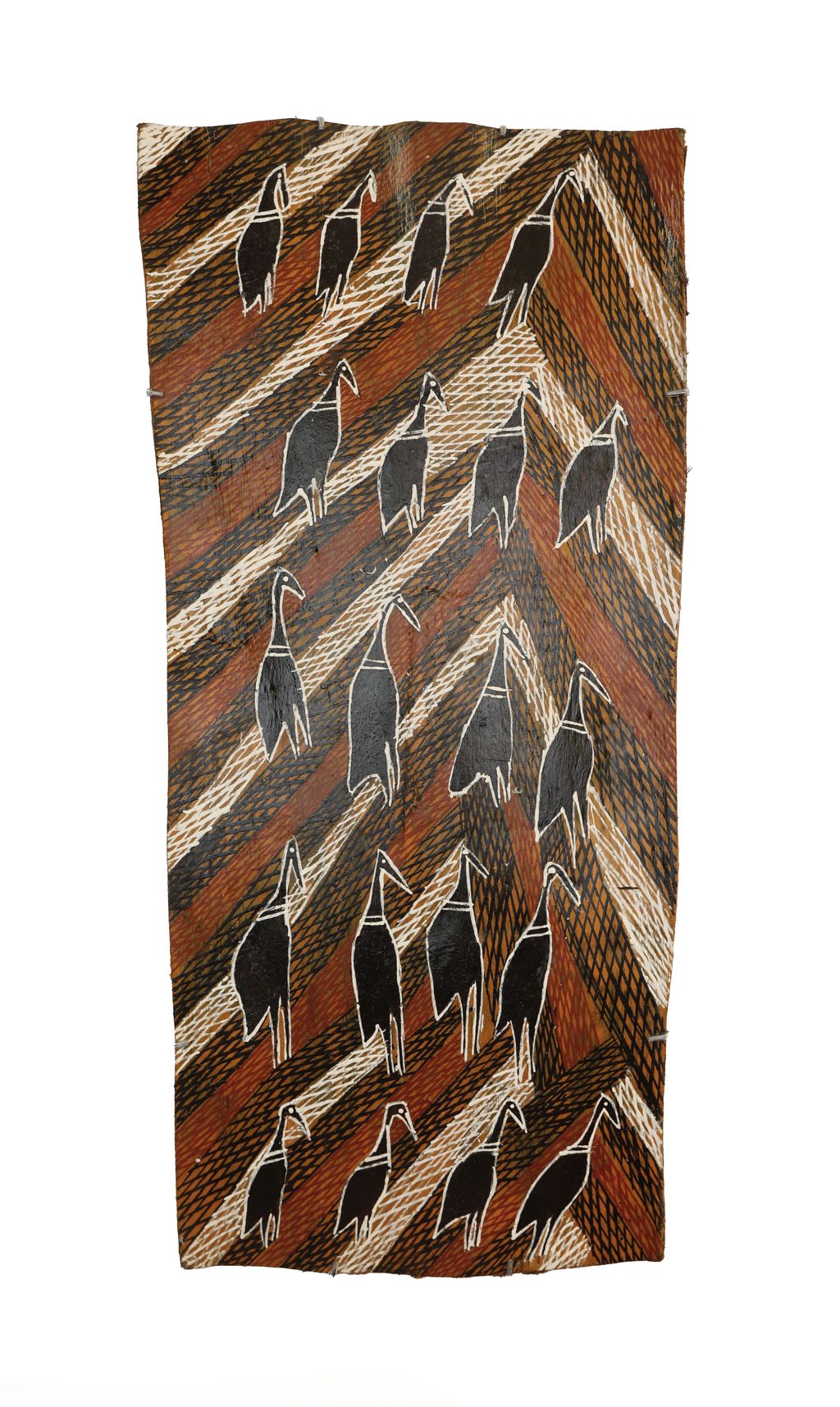
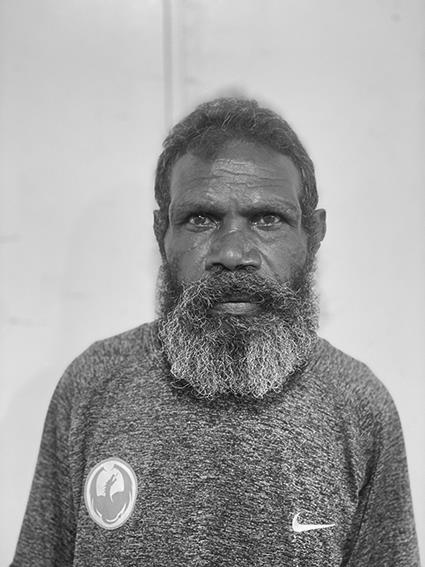
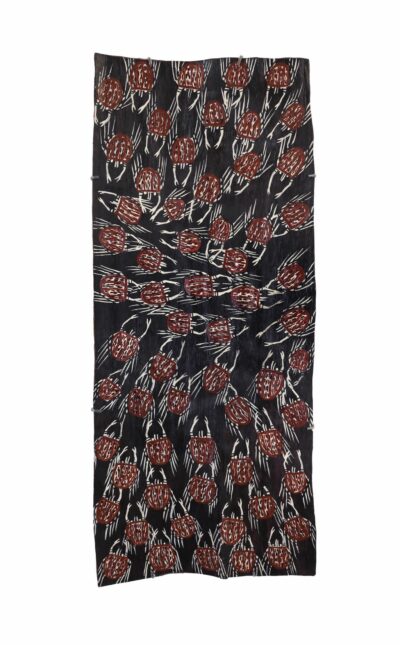
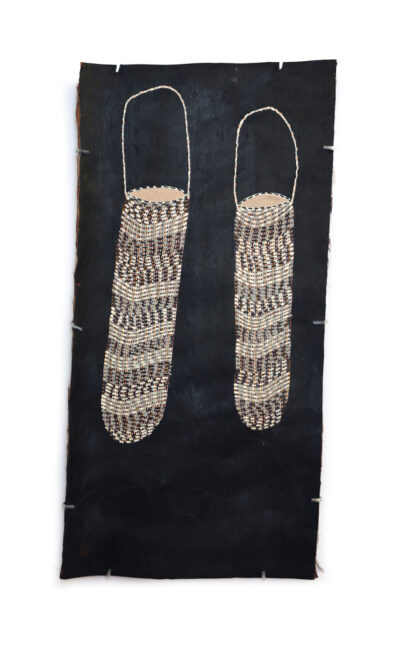
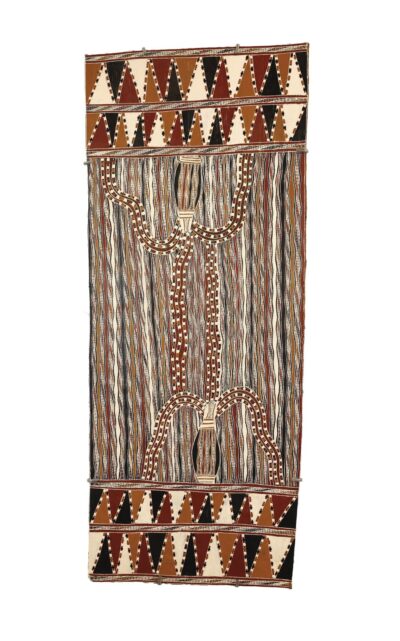
Reviews
There are no reviews yet.